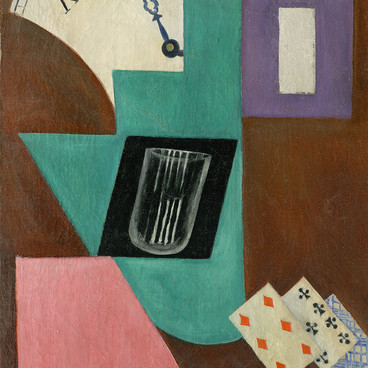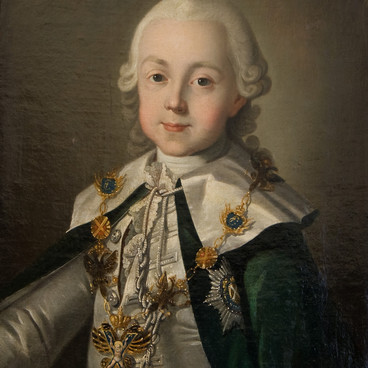The baroque portrait of the Duchess of Kurland was painted by an unknown artist in 1730 to 1740. Benigna Gottliebe Biron was born into the family of a Kurland nobleman Wilhelm Trott von Treiden in 1703. Since 1720, she was a maid of honor of the Empress Anna Ioannovna. In 1723, the queen married her off to her minion Ernst Biron.
Portrait of the Duchess of Kurland
Время создания
1730’s to 1740’s
Размер
108x82 cm
Техника
Canvas, oil
Выставка
5
Открыть в приложении#1
Unknown artist of the 18th century
Portrait of the Duchess of Kurland
#3
This is an example of a classic ceremonial portrait, which was popular in the late 18th to early 19th century. In such paintings, the model was portrayed in rich clothing and on a neutral background: in this way, the artists emphasized their high social status. In the background, the master depicted a marble column and a heavy green canopy drapery with tassels.
#2
The Duchess of Kurland is depicted wearing a pink gala dress with low neckline in the fashion of the 18th century. The wide sleeves of the dress are decorated with voluminous lace frills. The female outfit of that time resembled an elegant porcelain figurine. It emphasized the shoulders, the narrow waist covered with a corset, and the rounded hips. To make the skirt wider, dome-shaped wide hoops (panniers) were used. The hoops were made of whalebone, steel or willow rods. They were light in weight and waved when walking, revealing elegant shoes. The pannier was fastened to the corset with buttons. Whalebone was also used for the corset. Over the frame of hoops, a silk or satin petticoat was worn.
#4
The powdered hair of the Duchess of Kurland is adorned by an egret with many diamonds. It was a popular accessory made in the shape of a bird feather, a bunch of feathers or a twig of a plant. The egret was fastened with a fastener to hair or the bonnet. On her neck, the duchess is wearing a bow-shaped brooch with a pendant, which was often worn by court ladies. It is decorated with diamonds and precious stones. Such bows were worn on a velvet ribbon.
#5
After the death of Anna Ioannovna in 1740, Ernst Biron and the Duchess of Kurland were deprived of power and imprisoned in the Shclusselburg fortress. Only 23 years later, Empress Catherine the Great returned the ducal title to them. Upon returning from exile, the Duchess of Kurland went after her husband to the Latvian town of Jelgava. There she died in 1782.
The portrait of the Duchess of Kurland was acquired by the museum in 1981. It was brought from the boiler room of the Samara Opera House. The workers found a moldy piece of canvas that had fragments of an image of an unknown woman on it. The lower part of the portrait was completely lost. Restorer Tatyana Aleksushina restored the image and found out who was painted on it.
читать дальшескрыть
00:00
00:00
1x
Portrait of the Duchess of Kurland
Время создания
1730’s to 1740’s
Размер
108x82 cm
Техника
Canvas, oil
Выставка
5
Открыть в приложении
Поделиться



